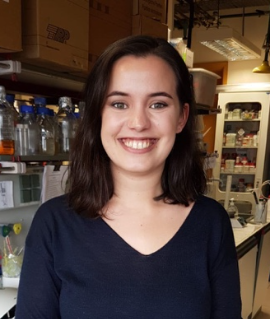Shailesh R Dave, Xavier’s Research Foundation, LCRD, India
Urbanization, economic growth, a desire for novelty, and rapid innovation have resulted in shorter-lasting products in general and electrical and electronic equipment (EEE) in particular. This resulted in an exponential rise in the production of EEE waste (EEEW) around the world. [....] » Read More
















Title : In vivo evolution of a transmitted/founder HIV-1 strain that is highly resistant to broadly neutralizing antibodies
Alon Herschhorn, University of Minnesota, United States
Background Envelope glycoproteins (Envs) of human immunodeficiency virus type I (HIV-1) mediate viral entry and are the sole target of neutralizing antibodies. Envs of most primary HIV-1 strains prefer to be in a closed conformation (State 1) and occasionally sample downstream c [....] » Read More
Title : Bacterial Diversity and Biocatalytic Potential of Sea Water and Related Saline Habitats: A Perspective from the Gujarat Coast, India
P. Satya Singh, Saurashtra University, India
The microorganisms of the saline habitats require dual extremities of alkaline pH and high salt concentrations. For the last three decades, we have investigated bacteria, actinobacteria and archaea from the sea water and related saline habitats of coastal Gujarat, India. Our stud [....] » Read More
Title : The challenges and status of vaccine development for Clostridioides difficile infection
Xingmin Sun, University of South Florida, United States
Clostridioides difficile is a Gram-positive, spore-forming and toxin-producing anaerobic bacterium. It is the most common cause of nosocomial antibiotic-associated diarrhea and the etiologic agent of life-threatening pseudomembranous colitis in the developed world. In the US, C. [....] » Read More
Title : Screening for proteins that extend chronological life span in yeast
Eugene Boon Beng Ong, Universiti Sains Malaysia, Malaysia
Ageing is a biological process that occurs with gradual structural and functional changes in living organisms with the passing of time. There are two types of ageing which are organismal ageing and cellular ageing. At the organismal level, organisms such as humans for example bec [....] » Read More
Title : The effectiveness of B cell and T cell epitopes cocktail as a potential vaccine against Staphylococcus aureus in two murine models
Samar Mansour Solyman, Suez Canal University, Egypt
Development of an effective vaccine against Staphylococcus aureus (S. aureus) is a key global health concern, especially in light of rising antibiotic resistance and the wide spread of methicillin resistant Staphylococcus aureus (MRSA) strains. Previous attempts for S. aureus vac [....] » Read More
Title : Development and validation of two robust simple chromatographic methods for estimation of tomatoes specific pesticides? residues for safety monitoring prior to food processing line and evaluation of local samples
Amira Hegazy, BSU, Egypt
Plant infestation by pets is one of the worst effects of bacteria and fungi on human food. Plants as a primary food resource are critical for human muscle building and mental health. Many farmers worldwide misuse the pesticides’ mixtures to keep crops, fruits, and vegetable [....] » Read More
Title : Structure Based Design of Novel Azine Linked Hybrids of 2-Indolinone- Thiazolodine Scaffold as Potential Quorum Sensing Inhibitors for Fighting Antimicrobial Resistance
Wesam S. Qayed, Assiut University, Egypt
Microbial multidrug resistance is becoming a global menace to humanity and finding alternative techniques to combat these "superbugs" is critical. Quorum sensing (QS) is a cell-to-cell communication mechanism in many bacterial strains uses to control the production of b [....] » Read More
Title : Anti HSV 1 Activity of natural raw and roasted unsalted pistachio kernels in human monocytic THP 1 and Vero cells.
Pennisi Rosamaria, University of Messina, Italy
In recent years, a great interest has been devoted to the search for alternative clinical treatment for HSV infections. To date, acyclovir and related nucleoside analogues are effective viral DNA polymerase inhibitors but their intensive use has led to the expansion of drug-resi [....] » Read More
Title : Bioplastics functionalization with phloretin to enhance their antioxidant and antimicrobial properties against food born pathogens
Teresa Gervasi, University of Messina, Italy
The formulation of eco-friendly biodegradable packaging has received great attention during the last decades to replace traditional widespread petroleum-based food packaging. Biodegradable polymers may play a pivotal role as delivery system for bioactive compounds able to protect [....] » Read More
Title : A link to the past, the genomic microcosm explaining America's history: present, past and future
Renato da Silva Bandeira, Amazon Foundation for Studies and Research, Brazil
The timeline of the discovery of America begins in 1492 with Christopher Columbus arriving in Mexico, Cabral in 1500 in Brazil and in 1607 the Colony of Virginia was founded in the USA. However, archaeological records have changed some historical concepts, bringing to light new e [....] » Read More
Title : Lignocellulose derived functional oligosaccharides: production, properties, and health benefits
Latika Bhatia, Atal Bihari Vajpayee University, India
Lignocellulosic biomass (LB) is the renewable feedstock for the production of fuel/energy, feed/ food, chemicals, and materials. LB could also be the versatile source of the functional oligosaccharides, which are non-digestible food ingredients having numerous applications in foo [....] » Read More
Title : Using cutting-edge computational genomic methods to deconstruct major pathogenic fungi: a case study of Monilinia
Bashir Akhlaq Akhoon, University of Jammu, India
Several in silico technologies will be described throughout the talk in order to bring fresh genetic insights into fungal diseases. The lecture will highlight how computer algorithms may assist us in assessing the completeness of genome assemblies, generating repeat libraries, an [....] » Read More
Title : Potential role of weather, soil and plant microbial communities in rapid decline of apple trees
Katchen Julliany Pereira Silva, Cornell University, United States
An unusual decline and collapse of young established trees known as “rapid apple decline” (RAD) has become a major concern for apple growers, particularly in the northeastern United States. This decline is characterized by stunted growth, pale yellow to reddish leaves [....] » Read More
Title : Quadruple Checkerboard: A modification of the three dimensional checkerboard for studying drugs combinations
Christina Isber, University of Balamand, Lebanon
Since the discovery of antimicrobial agents, their use had increased in the medical field and expanded to other fields. This caused the development of the “shadow epidemic”. Antimicrobial resistance caused by the misuse and overuse of antimicrobial drugs resulted in a [....] » Read More
Title : Postbiotics of beneficial bacteria as microbial based therapies to modulate intestinal microbiome
Jasna Novak, University of Zagreb, Croatia (Hrvatska)
Disturbance of the intestinal microbiome composition is associated with gastrointestinal as well as extraintestinal disorders. Growing knowledge suggests that microbial-based therapies through activities of biomodulators may restore a healthy intestinal microbiome. Biomodulators, [....] » Read More
Title : The Gut-Brain Axis in Neurodegenerative Diseases
Bhanu Priya Ganesh, The University of Texas Health Science Centre Houston, United States
Amyloid plaques in Alzheimer’s disease (AD) are associated with inflammation. Recent studies have demonstrated the involvement of gut in central amyloid-beta (Aβ) pathogenesis; still the mechanisms are not well understood. Dysregulation in gut pathophysiology due to im [....] » Read More
Title : Cloning, expression and characterization of Pullulanase enzyme from locally isolated klebsiella pneumoniae
Bushra Muneer, Government College University, Pakistan
Pullulanase is a potential candidate for bioremediation. It has found potential applications in medical, dental, pharmaceutical, food, baking, dishwashing, laundry and textile industry. Pullulanase act on α-1,6 glycosidic bonds and produce maltotriose as a major product. Th [....] » Read More
Title : Alpha-1-antitripsin, a key target to understand Shigella pathogenesis in humans
Mario Meza Segura, University of Massachusetts Chan Medical School, United States
Shigella spp. are highly adapted pathogens that cause bacillary dysentery in human and non-human primates. An unusual feature of Shigella pathogenesis is that this organism invades and subsequently colonizes the colonic epithelia from the basolateral pole. Therefore, Shigella has [....] » Read More
Title : The in vitro Potential of Novel Carbonic Anhydrase Inhibitors against Candida spp
Giuseppina Mandalari, University of Messina, Italy
Given the increased antimicrobial resistance, global effort is currently focused on the identification of novel compounds, both of natural and chemical origin. In immunocompetent subjects, Candida spp. are responsible for mucosal infections, including thrush and vaginit [....] » Read More
Title : The journey to rapid antibiotic resistance detection in Mycobacterium tuberculosis with direct sequencing of sputum samples: the benefits, the precautions, and the solution
Timothy Ting Leung Ng, The Hong Kong Polytechnic University, China
Direct sequencing of clinical specimens is now a trending approach for antibiotic resistance detection in Mycobacterium tuberculosis (MTB). Comparing with the golden standard phenotypic drug susceptibility test (pDST) and targeted sequencing with clinical isolates that requires 1 [....] » Read More
Title : Comparative genomics of Geobacillus species sensitive to TP-84 bacteriophage: identification of the bacterial defense systems
Agnieszka Zylicz Stachula, University of Gdansk, Poland
Defense systems are an essential weapon for prokaryotic microorganisms to resist heterologous DNA. Such weapons help them survive the persistent invasion of bacteriophages. Additionally, microbes use various defense systems to filter, control or degrade mobile genetic elements. H [....] » Read More
Title : Biointeraction with nanoparticles - microscopic observations
Żebrowska Joanna, University of Gdansk, Poland
Recently, nanotechnology is a very dynamically developing field of science. Scientists are trying to miniaturize materials in virtually every field. Nanotechnology has found application in such aspects of science as: drug and medical supplies, materials and manufacturing, environ [....] » Read More
Title : Emerging thermophilic bacteriophage model: deciphering TP-84 proteomics
Ireneusz Sobolewski, University of Gdansk, Poland
Thermophilic bacteriophages are a rare research objects, nevertheless they are highly interesting because of their often atypical biology and practical potential applications in molecular biology and biotechnology. Resistance to a wide temperature range makes them potential [....] » Read More
Title : Fusion proteins containing a binding domain as potential delivery systems for therapeutic proteins
Daria Krefft, University of Gdansk, Poland
Fusion proteins consist of at least two domains encoded by separate genes. These genes, when combined, are transcribed and then translated to form a single polypeptide. The use of biotechnological methods by using the fusion of the cloned foreign gene with the recipient's gen [....] » Read More
Title : Detection of topoisomerase IV encoding parC gene in recreational water isolates of Aeromonas veronii
Joanna Stec, Medical University of Lublin, Poland
Quinolones are frequently used drugs owing to their characteristics of easy to use, broad-spectrum activity, and high efficiency. Their presence in the environment can pose a threat to the ecosystem and to human health. Those antibiotics can enter water bacteria through e.g. huma [....] » Read More
Title : Seed endophytes against abiotic stress: An efficient solution to grow energy crops on marginal land?
Tori Langill, CMK Hasselt University, Belgium
Bioenergy and bioethanol crops are an efficient form of energy production and a step towards a greener future, but they use up our precious agricultural land which is better suited towards growing food in this era of booming population. Therefore, we explore a novel way to grow b [....] » Read More
Title : A laboratory audit of successful line probe assays
Sarishna Singh, National Health Laboratory Service, South Africa
Background: The HAIN GenoType®MTBDRplus (first line) and GenoType MTBDRsl (second line) line probe assays are nucleic acid amplification tests that work with PCR technology. The GenoType MTBDRsl line probe assay (LPA) is recommended by WHO as a replacement test instead of cul [....] » Read More
Title : Development of Antimicrobial Resistance to Quaternary Ammonium Compounds in the Human Skin Microbiota
Aubrey Frantz, University of North Texas at Dallas, United States
The use of disinfectants and sanitizers are a common practice in homes, workplaces, industries and hospitals. Quaternary ammonium compounds (QACs) are positively charged polyatomic ions with broad-spectrum antimicrobial activity that are frequently used as the active ingredient i [....] » Read More